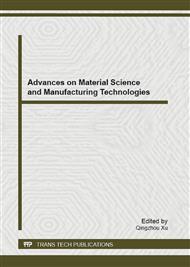p.130
p.134
p.139
p.143
p.148
p.153
p.157
p.162
p.167
Discuss the Applications of the Automotive Lightweight Materials in China Briefly
Abstract:
Before the Copenhagen Conference china had made a solemn promise that the unit GDP emission of carbon dioxide would drop than 2005 40%~45% before the year of 2020. To achieve this goal, at the same time in order to realize the sustainable development of the whole society, our country is actively travel commitments, and is working to promote automotive industry’s energy saving and emission reduction, green development. Through the use of lightweight materials, is an effective way to achieve vehicle energy saving and environmental protection. Although in the "Eleventh Five-Year Plan", we have obtained partial victory in the course of promoting the application of automotive light materials, but in comparison with powerful countries of the automobile, automobile enterprises of our country is still at the starting stage. In this paper, firstly, the main difference between China's automobile enterprises in lightweight materials application with multinational enterprises is described, and then the main reasons are analyzed. Finally, on the basis of this, some countermeasures and suggestions are given.
Info:
Periodical:
Pages:
148-152
Citation:
Online since:
December 2012
Authors:
Keywords:
Price:
Сopyright:
© 2013 Trans Tech Publications Ltd. All Rights Reserved
Share:
Citation:


